In the past, all you needed to carry to ensure a good day of riding were a pump, a multitool, and a patch kit. But as bikes have become more complex, with advanced suspensions, electronic drivetrains, and tubeless tires, so too have tools gotten more refined and elaborate. I’ve been carting around a veritable toolbox of equipment in my pack of late, trying to figure out what’s cool and what’s necessary. Here are some of my favorite new gizmos for on-the-go fixes.
Syncros SP1.0 Digital Shock Pump ($80)
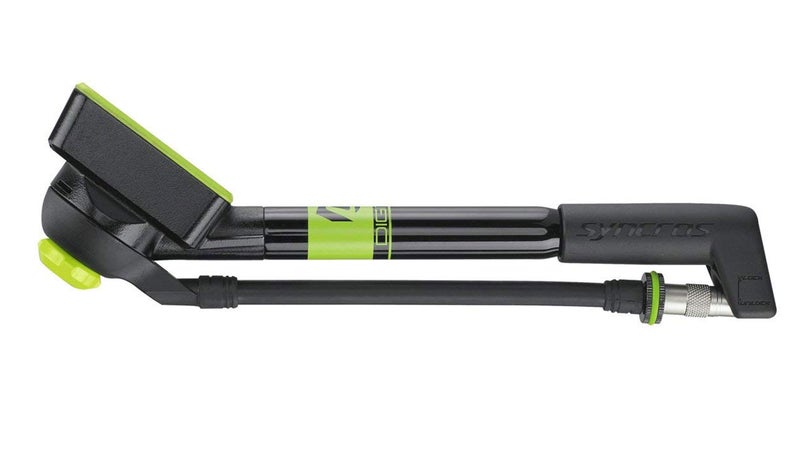
With mountain-bike suspensions more polished than ever, using an analog shock pump to set up your bike is like trying to connect to the internet with a dial-up modem. , which inflates up to 300 psi, has a digital gauge for accurate microadjustments, an oversize knob for bleeding off excess air, and an on-off valve at the hose head so you don’t lose any pressure when you disconnect the pump. I’m not certain of battery life, but I’ve been using mine for almost a year and it’s still going strong.
Silca T-Ratchet + Ti-Torque Kit ($98)
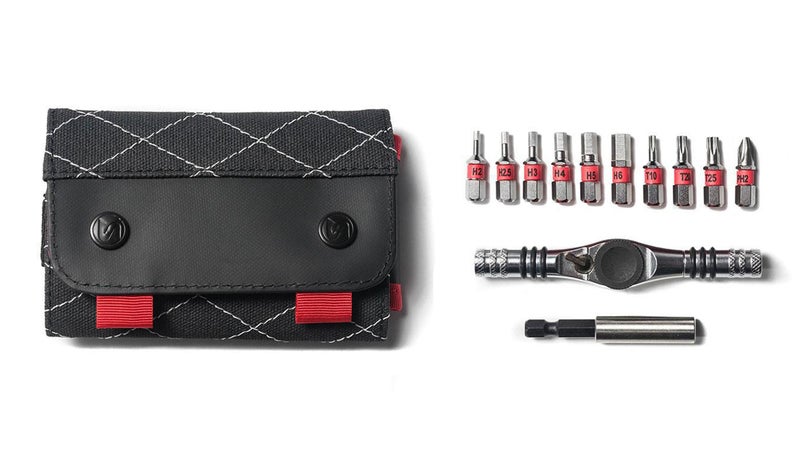
Bikes and components (bars, stems, posts, etc.) are built predominately from carbon these days, so it’s more important than ever to tighten bolts to the proper torque settings. That’s easy in a home shop but more difficult in the field due to the weight and bulk of a good torque wrench—until now. eschews the standard Swiss Army–style design used by 90 percent of the tools on the market in favor of a reversible ratchet, which can be configured in either a T- or an L-shape. Almost all the bits you need are included—2, 2.5, 3, 4, 5, and 6-millimeter hex, T10, T20, and T25 Torx, and a #2 Phillips head—and since it’s a standard driver, I snagged an 8-millimeter hex and a flathead from a home kit to fill it out. (Silca should really just include these for the price.) The torque tube extension lets you get the bolt tensions just right. The whole thing packs into a handy waxed-canvas carrying case and is smaller and lighter than most multitools. It’s high-quality but expensive, though Silca sells the without the torque extender for just $50. Spurcycle makes a similar, simpler , minus the ratchet function, that’s also nice.
Wolf Tooth Pack Pliers ($30)

Built of tough anodized aluminum, does what pretty much all other cycling multitools do not: the swiveling pliers easily open and close the master link on all 9-, 10-, 11-, and 12-speed chains for quick chain repairs. You can also carry spare master links (not included) inside the handle in case you break a chain in the field. Beyond that, the secondary teeth on the plier head tighten valve stems, the cutout on the handle removes valve cores, and the butt of the pliers doubles as a tire lever. Ingenious!
Dynaplug Megapill Kit ($75)
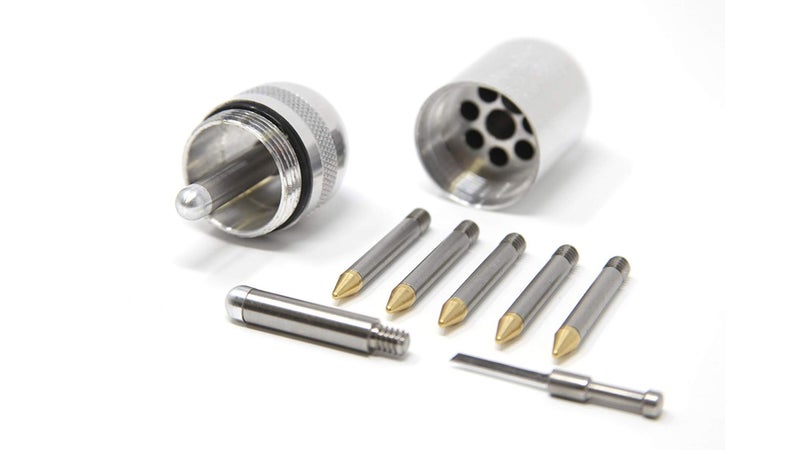
If flat tires have become a rarity these days, tubes, even for field changes, are all but extinct thanks to . Should I get a hole, I can usually unscrew this little egg, thread the insertion tube and install a plug, and jab the plug into the puncture before I’ve lost all tire pressure. The sealant in the tire does its job and fills any leaks around the plug. And with a few strokes of a hand pump, I’m up and running again without a tube. This kit comes with five standard plugs and two mega plugs for extra-large holes. I’ve repaired holes on road and mountain tires, even large sidewall tears, and often the plugs outlive the tires. For even faster repairs, Dynaplug also has an ($75), which integrates a carbon dioxide inflator so you fill the tires before removing the tool from the plug. Additional repair plugs can be purchased separately.
Blackburn Honest Digital Pressure Gauge ($25)
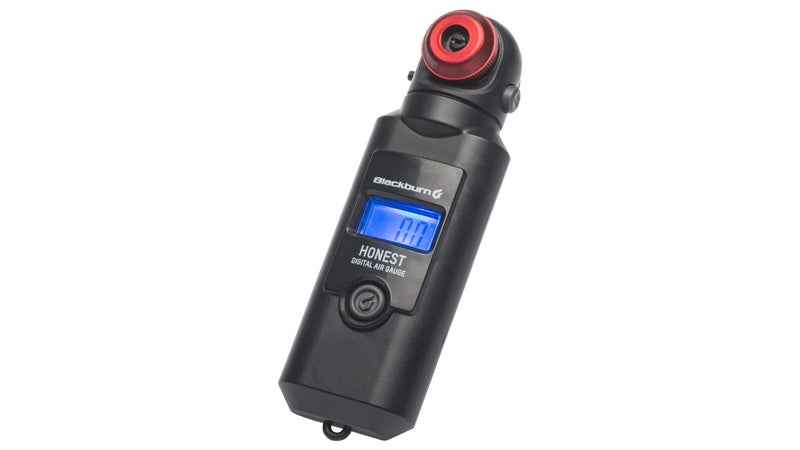
On today’s higher-volume tubeless tires, a few psi can mean the difference between a rough ride and ace traction, so the analog gauges on pretty much all hand pumps (and many floor pumps) are woefully inadequate. registers tire pressure in half-psi increments from 1 to 150, with a swivel head that fits Presta on one side and Schraeder on the other. The gauge lets out an audible chime once the pressure is registered so you can be sure of the reading. And the device turns off automatically once you’re finished.
One-Up EDC Tool System ($59)
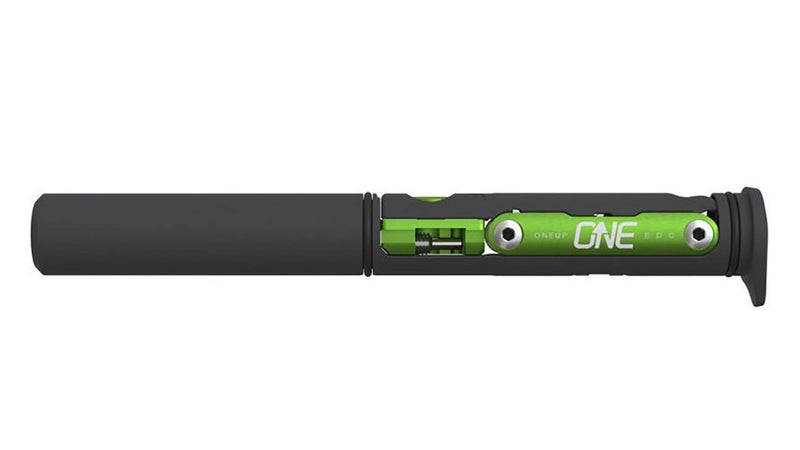
The EDC, is one of the most highly featured, fully integrated bike tools I’ve ever come across, with a wide range of options for carrying and storage. The multitool component is trim and fairly complete in its offerings (2, 2.5, 3, 4, 5, 6, and 8-millimeter hex, T25 Torx, flathead driver, quick link tool, and EDC top cap tool), and it mounts to a separate tool that includes a chain breaker/tire lever combo. Both of those pieces snap into a carrier, which holds a carbon dioxide cartridge in the bottom, and it all fits into a trim tube about the size of a large cigar. The entire package slips into a complementary EDC pump ($59), which means you have pretty much everything you could ever need in one place for field repairs. Even more trick, you can forgo the pump and store the EDC tool inside the steer tube of your fork, which takes a bit of wrenching and a proprietary top cap and tap to cut threads for the storage ($60 total), but ensures that you will always have the tool on your bike at all times. The machined parts are high-quality and tough, and the design and integration are elegant beyond most bike-industry solutions.


